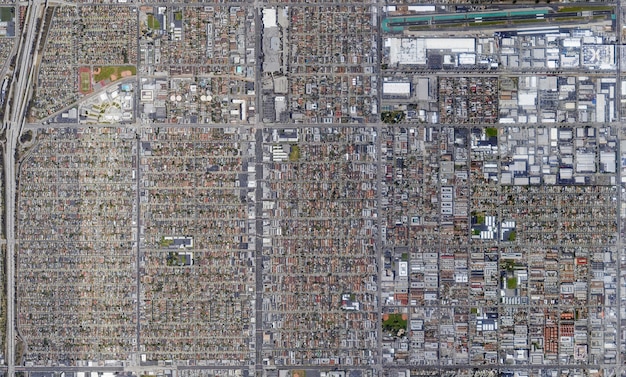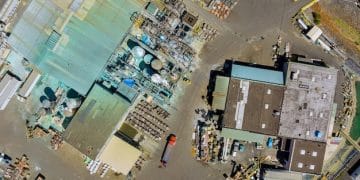Mexico’s Education Reforms: Workforce Impact & US Competitiveness

Mexico’s recent education reforms are fundamentally reshaping its workforce, with significant implications for US competitiveness and the future of binational economic development, fostering a more skilled and adaptable labor pool ready to meet evolving industrial demands.
The landscape of education in Mexico is undergoing a profound transformation, with recent reforms poised to redefine the nation’s human capital.
Analyzing the Impact of Mexico’s Education Reforms on the Future Workforce and US Competitiveness reveals a complex interplay of policy, social dynamics, and economic aspirations.
This deep dive explores how these shifts could empower a new generation of Mexican workers and, in turn, reshape the competitive dynamics between Mexico and its northern neighbor.
Understanding Mexico’s Educational Foundation and Recent Shifts
Mexico’s educational system has long grappled with disparities in quality, access, and relevance, particularly concerning the demands of a rapidly evolving global economy. Historically, significant portions of the population, especially in rural areas, faced limited opportunities for quality education, leading to a workforce with varied levels of preparedness. This challenge has been a critical barrier to Mexico’s full economic potential and its ability to compete effectively in global markets. Addressing these long-standing issues has become paramount for policymakers aiming to fortify the nation’s economic future.
Historical context of educational challenges
For decades, Mexico’s education system has contended with several deeply entrenched issues. These include chronic underfunding, a highly centralized bureaucratic structure that often stifles innovation, and a curriculum that, at times, struggles to align with the practical skills needed by industries. Moreover, teacher training and evaluation have often been inconsistent, contributing to a diverse range of educational outcomes across the country. These systemic hurdles have created a patchwork system, where urban centers might boast relatively strong schools, while rural and marginalized communities lag significantly behind.
- Underfunding: Persistent lack of adequate financial resources, leading to dilapidated infrastructure and insufficient teaching materials.
- Centralized Bureaucracy: A top-down approach that limits local autonomy and responsiveness to specific regional needs.
- Curriculum Mismatch: Discrepancy between academic offerings and the practical skills demanded by the labor market.
Key reforms introduced
In recent years, Mexico has embarked on a series of significant education reforms aimed at rectifying these historical imbalances and preparing its workforce for the 21st century. These reforms typically focus on several key pillars: improving teacher quality through rigorous evaluation and professional development, decentralizing decision-making to allow for more localized curriculum development, and updating educational content to emphasize critical thinking, problem-solving, and digital literacy. The current administration has refined these reforms, seeking to ensure greater equity and inclusivity, alongside a strong emphasis on vocational and technical training.
The reforms aim to foster a culture of continuous learning and adaptation within the educational system. By prioritizing relevant skills and fostering a more dynamic learning environment, the goal is to produce graduates who are not only academically proficient but also immediately employable and capable of contributing to Mexico’s economic growth sectors. This strategic shift is designed to strengthen Mexico’s position as a reliable partner in global supply chains and a competitive player in advanced manufacturing and technology.
The focus on early childhood education and basic literacy is also a foundational component. Recognizing that a strong start is crucial for long-term educational success, resources are being directed to ensure that foundational skills are solidly established from an early age. This comprehensive approach is vital for building a robust educational pipeline that can sustain Mexico’s socio-economic development over the long term.
Shaping the Future Workforce: Skills, Adaptation, and Innovation
The core objective of Mexico’s education reforms is to mold a workforce that is not just larger, but fundamentally more skilled, adaptable, and innovative. This transformation is pivotal for Mexico to transition from a manufacturing hub primarily focused on assembly to one capable of higher-value production and services. The reforms are an acknowledgment that future economic prosperity hinges on human capital development, moving beyond sheer labor numbers to cultivate expertise and creativity.
Focus on STEM and vocational training
A significant thrust of the reforms is the intensified focus on Science, Technology, Engineering, and Mathematics (STEM) education, coupled with robust vocational training programs. Recognizing the global demand for technical skills, Mexico is investing in strengthening these areas from primary education through higher learning. This includes partnerships with industry to develop curricula that directly address current and future job market needs, ensuring that graduates possess the practical competencies required by sectors like automotive, aerospace, and IT.
The emphasis on STEM fields is crucial for fostering an innovation-driven economy. By cultivating a strong base in these disciplines, Mexico aims to generate more home-grown technological advancements and intellectual property. Vocational training, meanwhile, is being revamped to offer high-quality, hands-on experience, making graduates job-ready upon completion. This dual approach seeks to bridge the gap between academic learning and industrial requirements, preparing students for immediate entry into specialized fields.
Developing soft skills and critical thinking
Beyond technical proficiency, the reforms also place significant importance on the development of “soft skills” such as critical thinking, problem-solving, collaboration, and communication. These attributes are increasingly vital in modern workplaces, where adaptability and interdisciplinary teamwork are prized. The educational framework encourages teaching methodologies that move beyond rote memorization, promoting active learning, debate, and project-based assignments.
The goal is to foster a generation of workers who can not only perform tasks efficiently but also analyze complex situations, innovate solutions, and adapt to rapidly changing technological landscapes. This holistic approach to skill development is intended to create a more resilient and flexible workforce, capable of navigating uncertainties and seizing new opportunities that arise from technological disruptions and evolving market demands. These skills are essential for competitiveness in a globalized economy.
Implications for US Competitiveness: Collaboration or Competition?
The evolution of Mexico’s workforce, driven by sweeping education reforms, carries profound implications for US competitiveness. The relationship between the two nations is deeply intertwined, marked by extensive trade, shared supply chains, and significant cross-border migration. The question arises: will a more skilled Mexican workforce primarily foster greater collaboration, or will it intensify competition in certain sectors? The answer likely lies in a nuanced blend of both.
Rising human capital in Mexico and its pull factors
As Mexico’s human capital develops, it becomes an even more attractive destination for foreign direct investment, particularly for industries seeking skilled labor at competitive costs. Companies that historically might have looked to Asia for manufacturing or nearshoring opportunities may find Mexico increasingly appealing due to its proximity to the US market, established trade agreements like the USMCA, and a growing pool of qualified workers. This could lead to a shift in global supply chains, strengthening North American integration.
The improvements in education could make Mexico a more reliable partner in complex manufacturing and technological ventures, creating a more robust nearshoring environment. This magnetic pull could encourage US companies to invest more significantly in Mexico, fostering job creation on both sides of the border. It also means that certain types of jobs that require more advanced skills could be increasingly performed in Mexico, given the competitive wage structures and improved educational outcomes. This shift, while potentially beneficial for overall regional economic growth, may pose challenges for specific US industries and job sectors as they adapt to a more formidable Mexican workforce.
Impact on bilateral trade and investment
A more skilled Mexican workforce is poised to deepen bilateral trade and investment between the US and Mexico. With enhanced capabilities in advanced manufacturing, technology, and services, Mexico can produce higher-value goods and components, leading to more sophisticated trade flows. This is particularly relevant for integrated supply chains, where efficiency and specialized skills are paramount. US companies could benefit from a resilient and capable manufacturing base just across the border, reducing logistical complexities and geopolitical risks associated with distant suppliers.
The increased skill level also means Mexico could become a larger consumer of US-made high-tech components, machinery, and specialized services, creating new markets for American exports. This reciprocal relationship, where both nations benefit from strengthened production capabilities and increased demand, is a powerful driver for regional economic growth. The ability of Mexico to produce more complex goods may also lead to increased foreign direct investment from the US, as companies look to leverage Mexico’s skilled labor to serve both the North American market and global export needs.

Addressing Challenges and Ensuring Inclusivity
Despite the promising outlook, Mexico’s education reforms face significant challenges that could impede their full impact. Ensuring inclusivity and overcoming systemic barriers are crucial for these reforms to truly benefit the entire workforce and maximize their positive implications for US competitiveness. The success of these initiatives hinges on their ability to reach all segments of the population, bridging existing socio-economic divides.
Overcoming regional disparities and access issues
One of the most persistent hurdles is addressing the vast regional disparities in educational quality and access. Urban centers typically have better infrastructure, resources, and qualified teachers compared to rural or marginalized areas. Bridging this gap requires targeted investments in underserved communities, including improving school infrastructure, providing access to technology, and attracting and retaining high-quality educators in remote regions. Without addressing these fundamental inequalities, a significant portion of Mexico’s potential workforce will remain underdeveloped.
This necessitates innovative approaches, such as distance learning solutions, mobile education units, and scholarship programs aimed at economically disadvantaged students. Ensuring equitable access to quality pre-school education is also vital, as early intervention can significantly improve long-term educational outcomes. The goal is to uplift entire communities by providing pathways to education and skills development, ensuring that no region is left behind in the national pursuit of a highly skilled workforce. This is critical not only for social equity but also for achieving the full economic benefit of the reforms.
Political continuity and sustained investment
The success of any long-term reform initiative, particularly in education, hinges on political continuity and sustained investment. Mexico’s reforms have seen shifts in direction with changes in administration, which can disrupt implementation and create uncertainty. For the full benefits to materialize, consistent policy frameworks and predictable funding are essential, transcending political cycles. This stability is crucial for educational institutions and businesses to make long-term plans.
Furthermore, adequate financial investment is paramount. Reforms require not just policy changes but also substantial resources for teacher training, curriculum development, technological infrastructure, and school maintenance. Sustained public and private sector investment is necessary to ensure that the educational system can continuously adapt to new skill demands and technological advancements, preventing it from stagnating. Without this commitment, even the best-intentioned reforms may fall short of their transformative potential, leaving Mexico’s workforce less prepared for future challenges.
Sector-Specific Impacts on US Industries
The evolving skills landscape in Mexico, spurred by educational reforms, will undoubtedly have sector-specific impacts on US industries. While some sectors may face increased competition, others stand to gain significantly from an improved North American supply chain and a more capable workforce south of the border. Understanding these nuances is crucial for strategic planning among US businesses and policymakers.
Automotive and manufacturing
The automotive and advanced manufacturing sectors are perhaps the most directly affected. Mexico has long been a critical hub for automotive assembly, and with a more highly skilled workforce, it can move up the value chain to produce more complex components, engage in research and development, and implement advanced manufacturing processes. This could lead to a more robust and resilient North American automotive industry, where parts are manufactured and assembled efficiently within the continent.
US automotive companies could benefit from a closer, more skilled labor pool, reducing lead times and transportation costs associated with overseas suppliers. However, this also means that some jobs requiring specific technical skills might shift from the US to Mexico, particularly those that are cost-sensitive. The impact will depend on the degree of automation in US plants versus the availability of highly skilled labor in Mexico, driving a need for US workers to upskill into higher-value technical or design roles.
Technology and services
The technology and services sectors present a different dynamic. As Mexico enhances its STEM education, it will produce more engineers, software developers, and IT professionals. This could turn Mexico into an even stronger nearshoring destination for IT services, call centers, and even R&D facilities for US tech companies. The proximity, cultural familiarity, and competitive labor costs make Mexico an attractive alternative to distant overseas providers.
While this could lead to some competition for entry-level tech jobs in the US, it is more likely to foster a complementary relationship. US tech companies could leverage Mexico’s talent pool for scaling operations, improving turnaround times for projects, and fostering innovation through cross-border collaboration. This would allow US firms to focus on highly specialized R&D, strategic management, and niche markets, while Mexico handles scalable IT operations and support services, creating a more integrated North American tech ecosystem.

Long-term Economic Projections and Regional Integration
Looking ahead, the long-term economic projections stemming from Mexico’s education reforms paint a picture of deeper regional integration and enhanced competitiveness for North America as a whole. The investment in human capital is not merely about Mexico’s internal development but fundamentally about strengthening the economic ties and collective standing of the USMCA bloc in the global economy.
Strengthening the USMCA value chain
A more skilled and productive Mexican workforce is a direct asset to the USMCA value chain. By improving the quality and breadth of Mexico’s manufacturing and service capabilities, the region becomes less reliant on external supply chains, fostering greater self-sufficiency and resilience. This is particularly critical in an era of geopolitical uncertainty and supply chain disruptions. With Mexico producing higher-quality goods and services, the efficiency and competitiveness of integrated North American industries are significantly enhanced.
This integration could lead to the development of new, more sophisticated products and services within the bloc, reducing the need to look elsewhere for specialized components or skilled labor. It also encourages a more robust and responsive manufacturing environment, allowing for quicker adaptation to market changes and technological advancements. The cumulative effect is a more formidable economic partnership that can collectively compete more effectively on the global stage, leveraging the unique strengths of each member country.
Mexico’s role in global competitiveness
As its workforce becomes more skilled, Mexico is poised to elevate its role in global competitiveness beyond simply being a low-cost labor provider. The reforms aim to position Mexico as a hub for innovation, advanced manufacturing, and a range of technical services. This transformation means Mexico can attract higher-value foreign direct investment, leading to more sophisticated industries and better-paying jobs for its citizens. Its strengthened position could also reduce the incentive for irregular migration to the US, as more opportunities become available domestically.
Ultimately, a stronger, more economically stable Mexico benefits the entire North American region. It creates a larger market for US goods and services, provides a more reliable and capable neighbor for investment and trade, and frees up US resources to focus on advanced research, development, and high-tech industries. The synergy created by a modern, skilled Mexican workforce and the strengths of the US innovation economy sets the stage for a powerful economic partnership capable of meeting future global challenges.
| Key Point | Brief Description |
|---|---|
| 📚 Education Reforms | Modernizing curriculum, teacher training, and access to improve workforce quality. |
| ⚙️ Workforce Development | Emphasis on STEM, vocational training, and critical soft skills for job readiness. |
| 📈 US Competitiveness | Closer nearshoring partnerships, integrated supply chains, and potential shifts in industry roles. |
| 🌍 Regional Integration | Strengthening USMCA value chains and elevating Mexico’s role in the global economy. |
Frequently Asked Questions About Mexico’s Education Reform Impact
▼
The primary goals of Mexico’s education reforms are to enhance the overall quality and relevance of education, reduce disparities in access, and better prepare students with the skills needed for the 21st-century workforce. This includes improving teacher quality, modernizing curricula to focus on STEM and critical thinking, and strengthening vocational training programs to meet industry demands. The reforms aim to create a more skilled and adaptable labor pool capable of driving economic growth.
▼
These reforms are expected to significantly benefit US industries engaged in nearshoring by providing a more highly skilled and productive Mexican workforce. This could lead to more robust and resilient supply chains within North America, particularly in advanced manufacturing and technology. US companies might find it more attractive to invest in Mexico for complex operations, fostering greater regional economic integration and reducing reliance on distant suppliers.
▼
The new educational framework is prioritizing a blend of technical and soft skills. On the technical side, there’s a strong emphasis on Science, Technology, Engineering, and Mathematics (STEM), alongside enhanced vocational training directly aligned with industry needs. For soft skills, the focus is on critical thinking, problem-solving, collaboration, communication, and adaptability, which are essential for navigating dynamic workplaces and fostering innovation across various sectors.
▼
While generally beneficial for regional competitiveness, there could be sector-specific challenges for the US workforce. As Mexico’s workforce becomes more skilled and efficient, certain manufacturing or technical jobs that are cost-sensitive might shift south of the border. This necessitates that the US workforce adapt by upskilling into higher-value roles, focusing on innovation, R&D, and specialized services to maintain competitiveness and ensure employment stability amidst evolving economic landscapes.
▼
Political continuity is critically important for the long-term success of Mexico’s education reforms. Consistent policy frameworks and sustained financial investment across different administrations are essential to allow for stable implementation, teacher development, and curriculum updates. Without this continuity, the reforms risk being disrupted, undermining their full potential to create a highly skilled workforce and integrate Mexico more deeply into the global economy.
Conclusion
The ongoing education reforms in Mexico are more than just internal policy adjustments; they represent a strategic investment in the nation’s future human capital, with profound implications for North American economic dynamics. By fostering a more skilled, adaptable, and innovative workforce, Mexico aims to elevate its position in global supply chains and enhance its competitive edge. This transformation holds significant promise for US competitiveness, potentially leading to deeper bilateral trade, stronger regional integration under the USMCA, and a more resilient economic bloc. While challenges such as regional disparities and the need for sustained investment persist, the trajectory points towards a collaborative future where an empowered Mexican workforce contributes meaningfully to collective prosperity. The long-term success of these reforms is poised to redefine Mexico’s role on the global stage, solidifying its standing as a powerful and indispensable partner to the United States.





